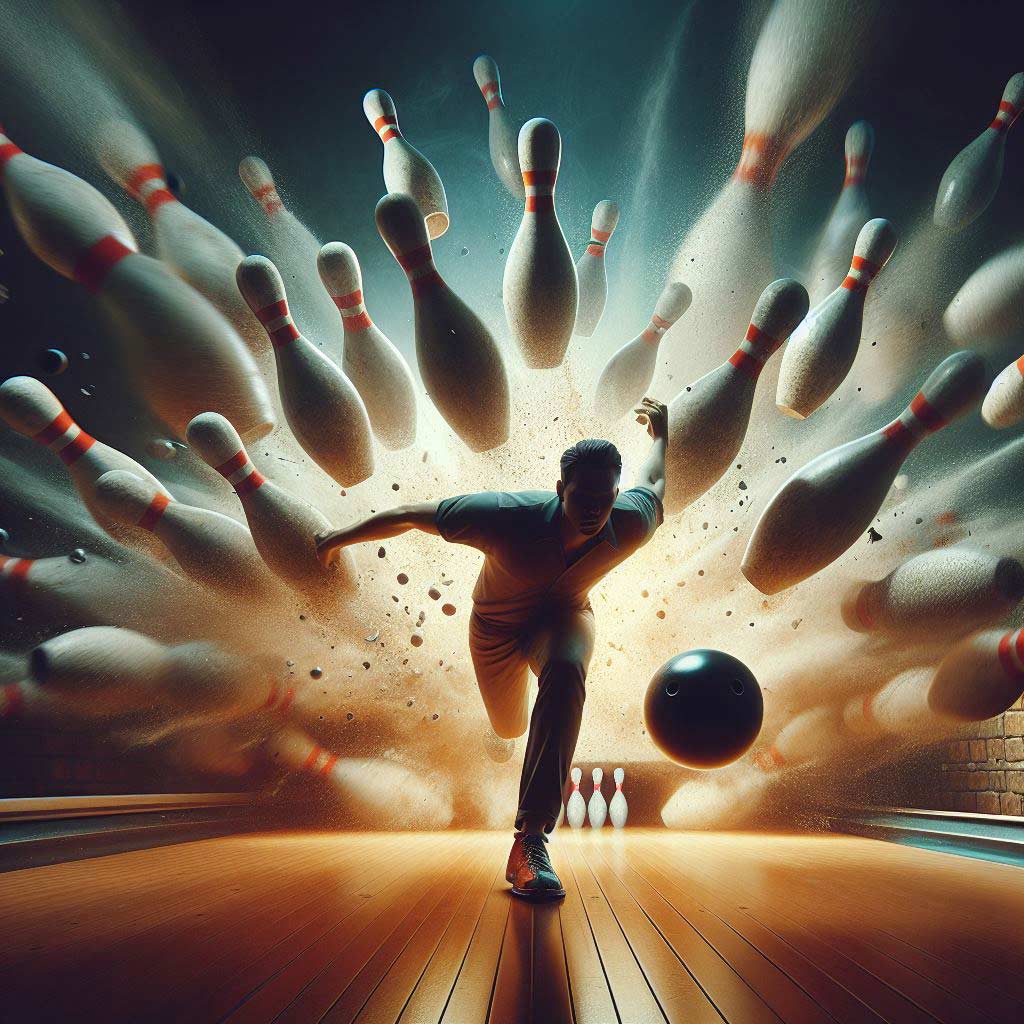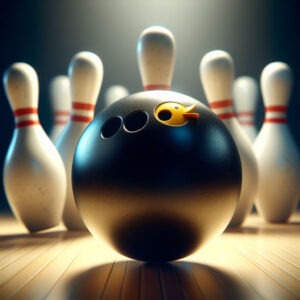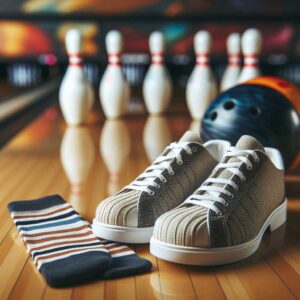Are you looking to take your candle pin bowling skills to the next level? Whether you’re a seasoned player or a beginner, mastering the art of candle pin bowling requires dedicated practice and the right training exercises.
In this comprehensive guide, we’ll dive into 7 essential exercises that will help you develop the essential skills needed to dominate the candle pin lanes.
Candle pin bowling is a unique and captivating variation of the classic ten-pin bowling game. Unlike its larger counterpart, candle pin bowling features smaller, narrower pins and a lighter bowling ball, creating a more challenging and nuanced gameplay experience. To excel at this sport, players need to hone their targeting, technique, and mental fortitude – and that’s where our training exercises come in.
Whether you’re looking to improve your accuracy, strengthen your arm swing, or develop strategic spin and curve control, this article has got you covered. So, let’s get started and unlock your full potential as a candle pin bowling champion!
Understanding the Fundamentals of Candle Pin Bowling
Before we dive into the training exercises, it’s important to understand the unique features that set candle pin bowling apart from its traditional ten-pin counterpart. Candle pin bowling features several key differences that players must adapt to:
- Smaller, Narrower Pins: Candle pin bowling uses pins that are significantly smaller and more slender than the standard ten-pin bowling pins. These diminutive pins stand just 15.75 inches tall and have a diameter of only 4.5 inches, making them much more challenging to knock down.
- Lighter Bowling Balls: Candle pin bowlers use a lightweight ball, typically weighing between 2 and 3 pounds. This lighter ball requires a different approach and technique compared to the heavier, 10-pound balls used in traditional bowling.
- Unique Gameplay: The dynamics of candle pin bowling are vastly different from ten-pin bowling. Bowlers must navigate the smaller pins, adjust their strategy for the lighter ball, and develop specialized techniques to achieve consistent success.
Mastering the fundamentals of candle pin bowling is crucial for developing a solid foundation and unlocking your full potential on the lanes. By understanding the unique characteristics of this sport, you can tailor your training exercises to address the specific skills and challenges you’ll face.
Targeting and Aiming Drills
One of the most critical skills in candle pin bowling is accurate targeting and aiming. With the smaller pins and lighter ball, even the slightest miscalculation can mean the difference between a strike and a spare. To hone your targeting abilities, try incorporating the following drills into your training regimen:
- Drill 1: Single-Pin Targeting – Set up a single candle pin at the end of the lane and practice rolling the ball to knock it down. Focus on your aim, adjusting your stance and release as needed to consistently hit the target. Start close to the pin and gradually increase the distance as you improve.
- Drill 2: Multi-Pin Targeting – Arrange a full set of candle pins on the lane and practice rolling the ball to knock down specific pins or combinations. Experiment with different aiming points and ball trajectories to develop a better understanding of how the ball interacts with the pins.
These targeting drills will help you develop a keen eye for precise aiming, improving your ability to consistently knock down the narrow candle pins. Remember to focus on your form, adjust your approach as needed, and celebrate your successes along the way.
Developing a Consistent Approach
A consistent approach is the foundation of successful candle pin bowling. Developing a smooth, repeatable routine from the approach to the release can significantly improve your accuracy and consistency on the lanes.
- Drill 1: Slow-Motion Approach Practice – Start by practicing your approach in slow motion, focusing on each step and maintaining proper form. Pay close attention to your footwork, body positioning, and ball control. Gradually increase the speed of your approach while maintaining the same level of control and precision.
- Drill 2: Timed Approach Drills – Set a timer and challenge yourself to complete your approach and release within a specific timeframe. This will help you develop a consistent tempo and rhythm, reducing the likelihood of rushing or rushing your shots.
Consistent approach and release are key to maintaining control of the ball and achieving accurate shots. By mastering these drills, you’ll develop the muscle memory and coordination needed to execute your approach with precision, time after time.
Strengthening Your Arm Swing
The arm swing is a critical component of candle pin bowling, as it generates the necessary power and momentum to propel the ball down the lane. Developing a strong, consistent arm swing can significantly improve your ball speed, accuracy, and overall performance.
- Drill 1: Pendulum Swing Exercises – Stand with your feet shoulder-width apart, holding the bowling ball at arm’s length. Gently swing the ball back and forth, maintaining a smooth, pendulum-like motion. Focus on keeping your arm relaxed and your elbow high throughout the swing.
- Drill 2: Resistance Band Exercises – Attach a resistance band to a secure anchor point and hold the other end with your bowling hand. Perform arm swing motions, using the resistance of the band to build strength and control in your swing.
Incorporating these arm swing exercises into your training routine will help you develop the necessary power and consistency in your ball delivery, setting you up for more accurate and powerful shots on the candle pin lanes.
Improving Ball Release and Follow-Through
The ball release and follow-through are crucial elements of candle pin bowling technique. A proper release and follow-through not only contribute to accuracy but also help you maintain control of the ball and maximize your scoring potential.
- Drill 1: Controlled Release Practice – Stand in your normal bowling stance and practice releasing the ball with a smooth, controlled motion. Focus on maintaining your form and balance throughout the release, and pay attention to the position of your fingers, hand, and arm at the point of release.
- Drill 2: Follow-Through Drills – After releasing the ball, hold your follow-through position for a few seconds, keeping your eyes on the target. Experiment with different follow-through styles and observe how they affect the ball’s trajectory and pin action.
By mastering the perfect ball release and follow-through, you’ll be able to consistently deliver the ball with accuracy, control, and power – key factors for success in candle pin bowling.
Developing Spin and Curve Control
Adding spin and curve to your shots can be a game-changer in candle pin bowling. By learning to control the ball’s rotation and trajectory, you can create strategic advantages and better navigate the unique lane conditions you’ll encounter.
- Drill 1: Spin and Curve Training – Start by practicing shots with a slight spin or curve, gradually increasing the intensity as you become more comfortable. Experiment with different release angles, hand positions, and ball speeds to understand how they affect the ball’s spin and curve.
- Drill 2: Adjusting for Different Lane Conditions – Candle pin bowling lanes can vary significantly in terms of surface texture, oil patterns, and other factors that can impact the ball’s behavior. Practice adjusting your spin and curve to adapt to different lane conditions, learning to make real-time adjustments during your games.
Mastering spin and curve control will give you a strategic edge on the candle pin lanes, allowing you to navigate challenging lane conditions, create unique ball trajectories, and knock down those elusive pins with precision.
Enhancing Your Mental Game
Candle pin bowling is as much a mental game as it is a physical one. Developing a strong mindset and the ability to stay focused and composed under pressure can be the difference between a good game and a great one.
- Drill 1: Visualization and Mental Imagery – Practice visualizing yourself executing perfect shots and knocking down the pins. Imagine the feel of the ball in your hand, the smooth release, and the satisfying sound of the pins crashing down. This mental rehearsal can help reinforce the physical skills you’re developing.
- Drill 2: Concentration and Focus Exercises – Set aside time to practice focused, distraction-free bowling. Eliminate external noise and distractions and train yourself to maintain laser-like concentration on the task at hand. Experiment with techniques like deep breathing, meditation, and positive self-talk to help you stay present and focused.
By strengthening your mental game, you’ll be able to overcome the inevitable challenges and setbacks you’ll face on the candle pin lanes. A strong, positive mindset will empower you to perform at your best, even in high-pressure situations.
Incorporating Cardio and Strength Training
Candle pin bowling may seem like a relatively low-impact sport, but the physical demands of the game should not be underestimated. Incorporating cardio and strength training exercises into your overall training regimen can help you develop the endurance, power, and stability needed to excel on the lanes.
- Drill 1: Cardio Exercises for Endurance – Implement a regular cardio routine, such as running, cycling, or swimming, to build your cardiovascular fitness and improve your stamina. Increased endurance will allow you to maintain your form and focus throughout longer bowling sessions and tournaments.
- Drill 2: Strength Training for Power and Stability – Incorporate strength training exercises that target the muscles used in candle pin bowling, such as your core, legs, and arms. By building strength and stability, you’ll be able to generate more power in your shots and maintain better control and balance on the lane.
Integrating physical training into your overall candle pin bowling regimen will help you build the physical foundation needed to sustain your performance over extended periods of play.
This holistic approach will not only improve your results on the lanes but also reduce the risk of injury and help you maintain your passion for the sport.
Conclusion
Mastering the art of candle pin bowling requires dedication, practice, and the right training exercises. By implementing the 7 essential exercises outlined in this guide – targeting and aiming, developing a consistent approach, strengthening your arm swing, improving ball release and follow-through, honing spin and curve control, enhancing your mental game, and incorporating physical training – you’ll be well on your way to becoming a candle pin bowling champion.
Remember, consistent practice is the key to unlocking your full potential. Embrace the challenge, celebrate your successes, and enjoy the journey of continuously improving your skills on the candle pin lanes. With the right mindset and the guidance provided in this article, you’ll be knocking down pins with ease and having a blast in the process.
So, what are you waiting for? Lace up your bowling shoes, grab your ball, and get started on your path to candle pin bowling mastery. The lanes are calling, and the pins are waiting to be toppled. Good luck, and may the candle pins ever be in your favor!





